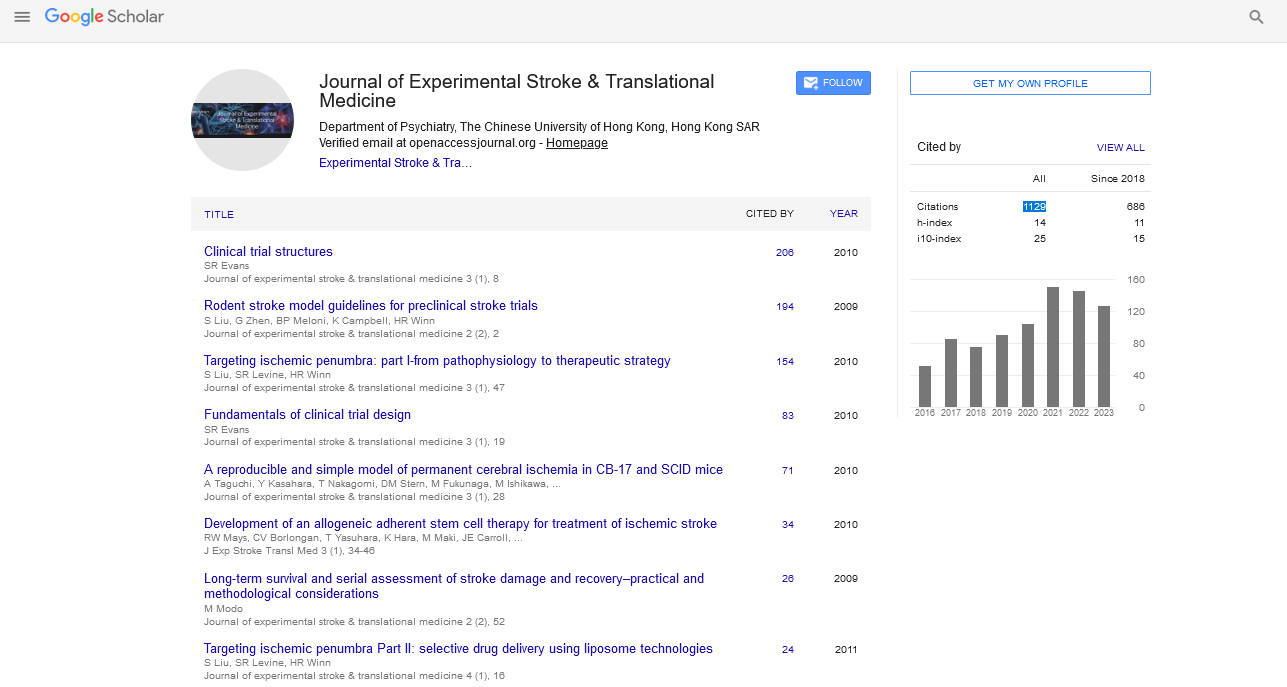Perspective - Journal of Experimental Stroke & Translational Medicine (2024) Volume 16, Issue 6
Transdisciplinarity: A Holistic Approach to Complex Problems
- Corresponding Author:
- Yijun Suo
Department of Technological Advancements, Tsinghua University, Haidian, China
E-mail: brianjju@123.com
Received: 04-Nov-2024, Manuscript No. jestm-24-153506; Editor assigned: 07-Nov-2024, PreQC No. jestm-24-153506 (PQ); Reviewed: 21-Nov-2024, QC No. jestm-24-153506; Revised: 03-Dec-2024, Manuscript No. jestm-24-153506 (R); Published: 31-Dec-2024, DOI: 10.37532/jestm.2024.16(6).275-276
Introduction
In an era defined by rapid technological advancements, globalization and increasingly complex societal challenges, traditional disciplinary boundaries often fall short in addressing multifaceted issues. Transdisciplinarity has emerged as a progressive and integrative approach to knowledge creation and problem-solving, transcending conventional academic disciplines to offer holistic solutions. Unlike multidisciplinary or interdisciplinary frameworks, which involve collaboration among various disciplines while maintaining their distinct methodologies, transdisciplinarity seeks to merge perspectives, methodologies and knowledge bases, ultimately leading to a unified framework for addressing complex real-world problems.
This article explores the concept of transdisciplinarity, its significance in contemporary research and practice and the challenges and opportunities it presents for various fields.
Description
Defining transdisciplinarity
Transdisciplinarity is a research and problem-solving approach that goes beyond the integration of different academic disciplines. It aims to create a new, overarching framework that synthesizes knowledge from multiple sources, including academic, professional and lay perspectives. This holistic approach recognizes that many of today’s most pressing issues such as climate change, public health crises and social inequality are inherently complex and cannot be adequately addressed within the confines of a single discipline.
Historical context and evolution
The concept of transdisciplinarity emerged in the 1970s, influenced by the works of scholars such as Jean Piaget and Erich Jantsch. Piaget envisioned a new kind of scientific inquiry that transcended disciplinary boundaries, while Jantsch emphasized the importance of integrating science with society to address complex challenges. Over time, the concept has evolved to encompass not only academic integration but also the inclusion of non-academic knowledge and expertise.
Transdisciplinarity gained prominence in fields such as sustainability science, public health and urban planning, where complex problems require collaborative and integrative solutions. Today, it is increasingly recognized as a critical approach in addressing global challenges, such as achieving the United Nations’ Sustainable Development Goals (SDGs).
Applications of transdisciplinarity
Sustainability and environmental science: Environmental challenges such as climate change, biodiversity loss and resource depletion are inherently transdisciplinary. Addressing these issues requires the integration of natural sciences, social sciences, economics and indigenous knowledge systems. For example, sustainable urban planning involves not only engineering and architecture but also sociology, economics and environmental science to create livable, resilient cities.
Case study: The development of renewable energy systems, such as solar and wind power, requires collaboration among engineers, environmental scientists, economists and policymakers to ensure technological feasibility, environmental sustainability and economic viability.
Public health and global health
Public health crises, such as the COVID-19 pandemic, have highlighted the need for transdisciplinary approaches. Effective responses require the integration of medical science, epidemiology, behavioral science, economics and public policy. Moreover, engaging with community stakeholders and incorporating local knowledge are essential for developing culturally appropriate interventions.
Case study: The global response to HIV/AIDS involved collaboration among researchers, healthcare providers, policymakers and community organizations to develop effective prevention, treatment and care strategies.
Social innovation and entrepreneurship: Transdisciplinary approaches are increasingly applied in social innovation and entrepreneurship to address complex social challenges such as poverty, education and inequality. By integrating insights from various disciplines and engaging with diverse stakeholders, social entrepreneurs can develop innovative solutions that are both impactful and sustainable.
Case study: Microfinance initiatives, such as those pioneered by Grameen bank, combine principles from economics, sociology and business to provide financial services to underserved populations, empowering them to improve their economic well-being.
Challenges and barriers
While transdisciplinarity offers numerous benefits, it also presents significant challenges:
Epistemological differences: Different disciplines often have distinct epistemological frameworks, methodologies and terminologies. Integrating these diverse perspectives can be challenging and may require significant effort to develop a common language and shared understanding.
Institutional barriers: Academic and research institutions are often organized around disciplinary silos, which can hinder transdisciplinary collaboration. Traditional funding structures, publication norms and career advancement criteria may also discourage researchers from engaging in transdisciplinary work.
Complexity and uncertainty
Transdisciplinary projects often involve high levels of complexity and uncertainty, making it difficult to predict outcomes and measure success. This can pose challenges for project management, evaluation and decision-making.
Conclusion
Transdisciplinarity represents a paradigm shift in how we approach knowledge creation and problem-solving. By transcending disciplinary boundaries and integrating diverse perspectives, it offers a holistic and collaborative framework for addressing the complex challenges of the 21st century. While it presents significant challenges, the potential benefits in terms of innovation, relevance and impact make it a critical approach for advancing knowledge and improving the human condition.
As we navigate an increasingly complex and interconnected world, the importance of transdisciplinarity will continue to grow. By embracing this integrative approach, we can develop more effective and sustainable solutions to the pressing issues facing our society and the planet.

